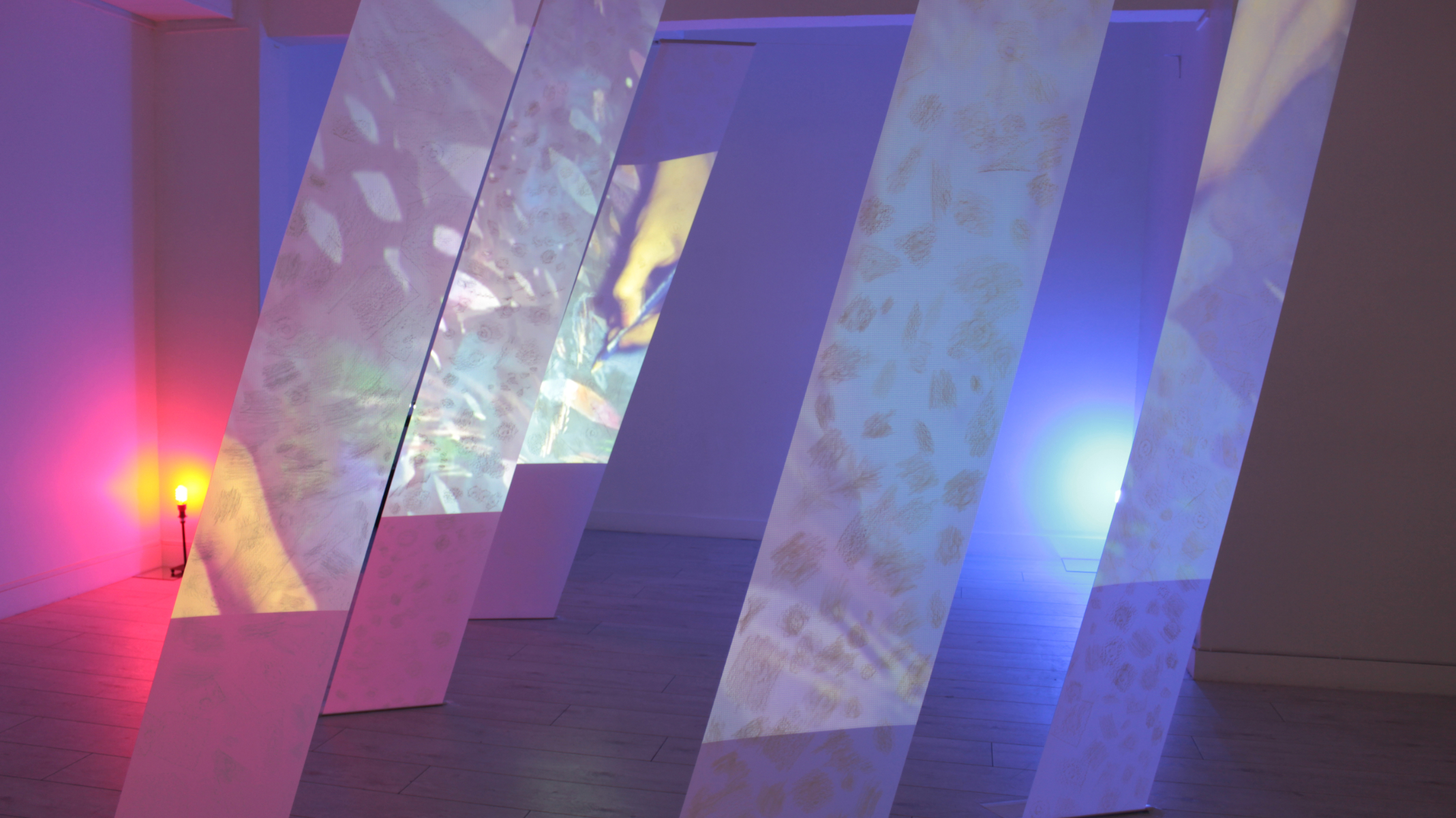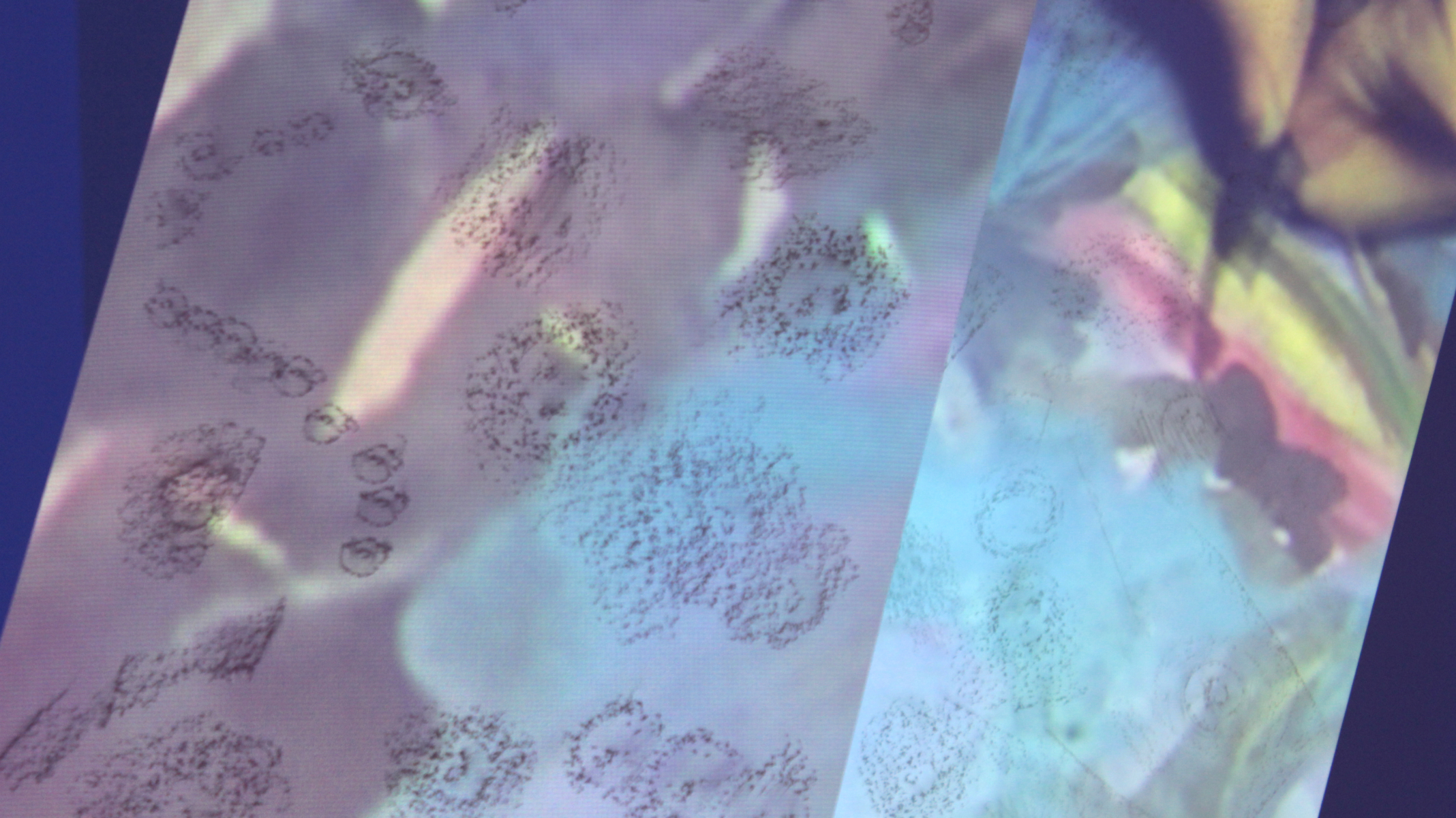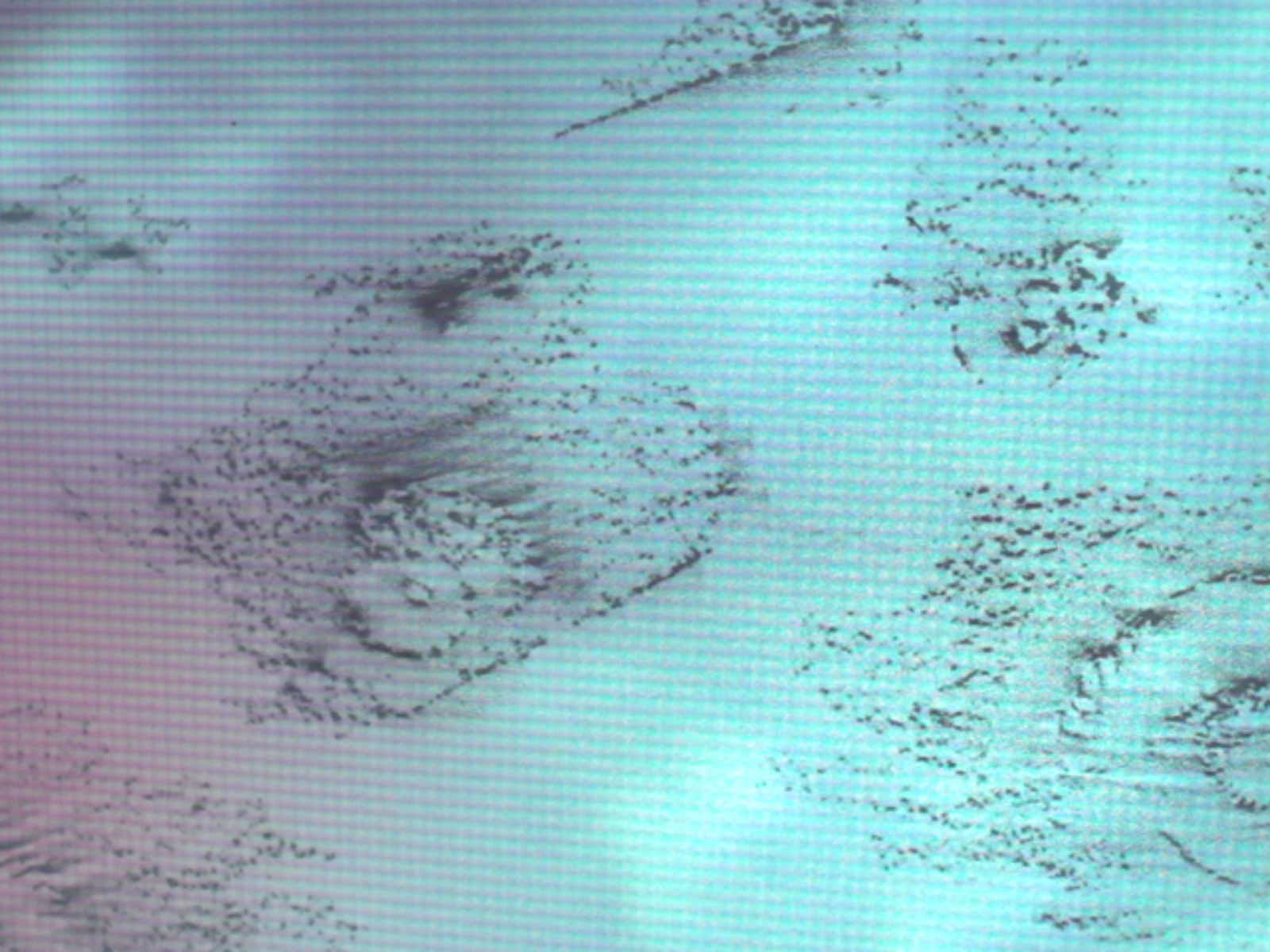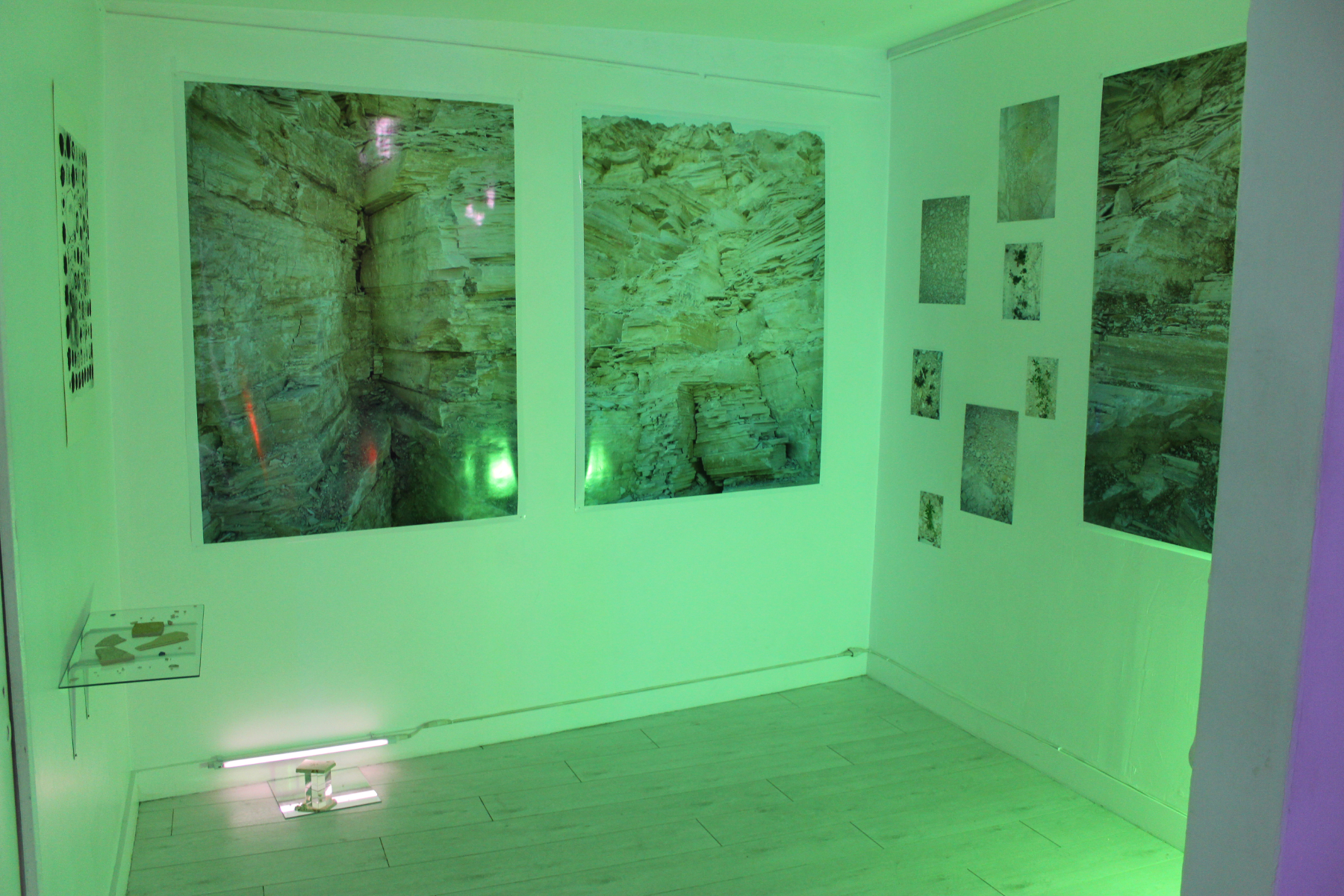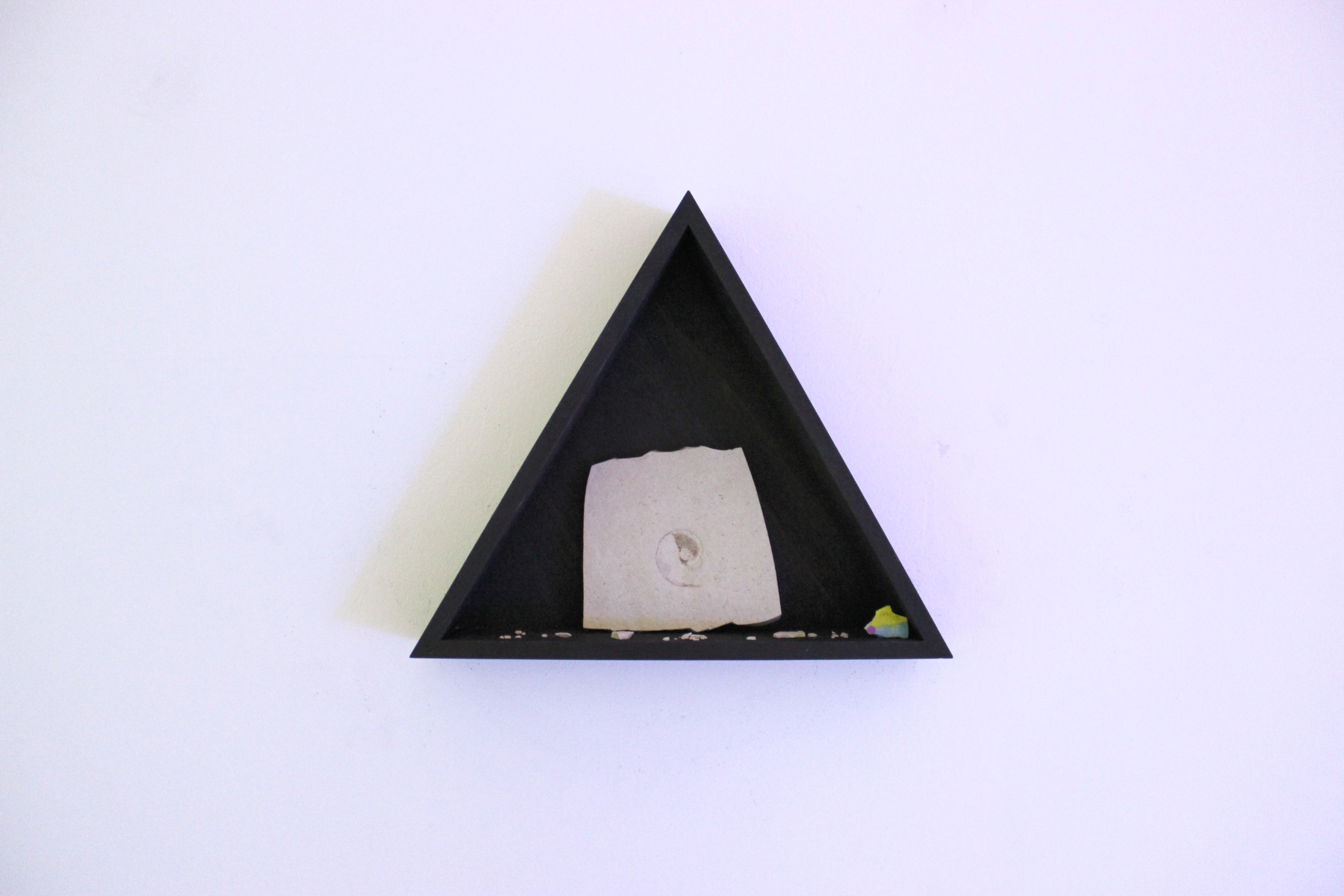“Superimposed Readings: we should read necessity behind sensation, order behind necessity and God behind the order.” Gravity and Grace by Simone Weil
The Galerie Hors-Champs is pleased to continue its collaboration with the Japanese artist Adoka Niitsu, presenting the next phase of her research following the “Le Piaffer” exhibition, on the subject of psychical projection and its dissemination by means of various technologies in accordance with different time periods.
This exhibition is once again composed of drawings and an installation, with the addition of some photographs to the ensemble. The exhibition is designed so that each medium alludes to the other, thereby developing a reflection on the creative process.
Thus, these photographs of lithographic rocks with “recorded” motifs inspire the drawings, the latter rendered with the obsessive precision of automatic drawing. Video images, abstract or showing the artist at work, are then projected onto these drawings.
The succeeding phases of the exhibition inherently transpose Adoka Niitsu’s investigations: on what different levels does an artwork form itself? From which history does an image arise? What is the cultural heritage of the objects or techniques that serve as the image’s medium, and to what extent is this heritage still present within it?
This theme of levels is translated in the transition of the images, firstly, created as though archived in the limestone strata, subsequently drawn, before being filmed... this is not merely a reproduction of the same motifs but the expression, specific to each medium, of their original aspects by means of natural recording, automatic drawing, and the continuous movement of the forms and lights of video.
But this original, be it nature or the psychical hemisphere beyond language, is itself a flux in perpetual motion. Adoka Niitsu wants us to sense this evolving movement in her paintings, sustained by the Dionysian convulsion of colours, and the assorted techniques employing ink, acrylic and lead pencil. In accordance with a texture highlighted or concealed by another, she invites us to imagine, corresponding to each layer, the artist’s “state of mind” at the instant of creation.
The unrestrained profusion of colours involves the willingness to directly convey the evocative evidence of drawings, while the black and white images of the previous exhibition were more emotionally neutral. Nevertheless, the cultural meanings of the colours, in contrast to the greys of natural ornaments, have also been taken into consideration in the artist’s evolutionist approach.
The link between Adoka Niitsu’s creative world and these mineral cursives is further heightened by the projection of films onto the tracing paper she also uses to make rubbings on fossils. The latter come to life upon their passage through the video medium, this marriage the scene of a play between abstract and figurative, inertia and movement, primitive and contemporary.
While the “real image”, that of the screen, is the abstract imprint of the fossils, the only figurative images are those of the video, the “virtual image”. The tentative superposition of these opposites wedded in a coherent ensemble reflects contemporary questions about the ambiguity of reality in our “age of simulacra”.
Perhaps it also represents, through the reconciliation between evolution and conservation, an elegy to memory… a sensory memory, guided by Ariadne’s thread of art and poetry.
Text: Hannibal Volkoff - Artistic Director, Galerie Hors-Champs
Translation(French to English): Audrey Concannon
